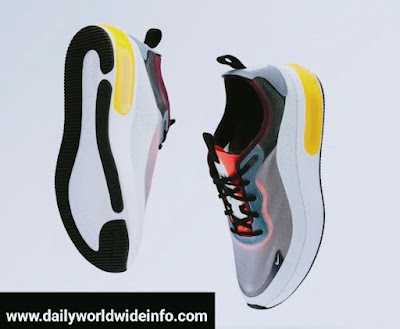Shoes once considered a mere necessity for protecting our feet, have evolved into a powerful fashion statement. From practicality to runway elegance, the journey of shoes through the annals of time reflects not only changing trends but also societal shifts and technological advancements. In this exploration, we delve into the fascinating world of shoe fashion, tracing its roots, examining pivotal moments, and forecasting future trends.

I. Historical Footprints
A. Ancient Beginnings
The history of shoes can be traced back to ancient civilizations, where footwear served primarily as protection against harsh terrain. Egyptians crafted sandals from natural fibers, while the Greeks elevated style with leather sandals adorned with intricate designs. The Romans took this further, introducing the concept of different shoes for different occasions, laying the foundation for the symbiotic relationship between function and fashion.
B. Medieval Elegance
During the Middle Ages, shoes became a status symbol. Pointed shoes with exaggerated lengths symbolized wealth and nobility. Royals and aristocrats commissioned bespoke footwear, featuring opulent materials and intricate embroidery. The evolution of shoes mirrored societal hierarchies and became an integral part of ceremonial and courtly attire...
II. The Renaissance of Style
A. Baroque Extravagance
The Renaissance period marked a departure from the simplicity of medieval footwear. The Baroque era saw the rise of heels, a trend attributed to both fashion and function. Heels not only added height and stature but also represented wealth and privilege. This era laid the groundwork for the idea that shoes could be both utilitarian and fashionable.
B. Industrial Revolution: Mass Production and Design Innovation
The 18th and 19th centuries witnessed a transformative phase in shoes fashion with the advent of the Industrial Revolution. Mass production allowed for greater accessibility, but it was also a time of innovation. The Victorian era saw the emergence of buttoned boots, reflecting changing social norms and fashion sensibilities. The increased availability of shoes paved the way for diversity in styles and designs.
III. 20th Century: Fashion Liberation
A. The Roaring Twenties: Flapper Chic
The 1920s heralded a new era of freedom and expression. Flappers discarded traditional norms, and shoes became a focal point of rebellion. Mary Janes and T-straps adorned with sequins and beads epitomized the Jazz Age spirit. The shoes of this era mirrored the societal shift towards liberation and individuality.
B. Post-War Boom: Glamour and Casual Comfort
Post-World War II, the 1950s brought about a dichotomy in shoes fashion. On one hand, glamorous stilettos and kitten heels gained popularity, thanks to Hollywood icons. On the other hand, the rise of casual wear introduced sneakers and loafers, emphasizing comfort without compromising style. The dichotomy in styles reflected the diverse roles women played in society.
IV. Contemporary Trends
A. Sportswear Influence
The latter half of the 20th century witnessed a significant shift with the influence of sportswear on shoes fashion. Sneakers, once reserved for athletic pursuits, transcended their utilitarian origins. Brands collaborated with athletes and celebrities, turning sneakers into coveted fashion items. The rise of athleisure further blurred the lines between sportswear and everyday fashion.
B. Sustainable Fashion: A Step Towards the Future
As awareness of environmental issues grows, the fashion industry, including shoes, is undergoing a paradigm shift. Sustainable materials, ethical production practices, and circular fashion are reshaping the industry. Brands are incorporating recycled materials and innovative designs, promoting a more eco-conscious approach to shoes fashion.
V. Future Footsteps: Technology and Beyond
A. Technological Innovations
The 21st century has seen unprecedented technological advancements in shoes design and manufacturing. 3D printing, smart fabrics, and augmented reality are revolutionizing the way shoes are created and experienced. Customization options are expanding, allowing consumers to personalize their footwear like never before.
B. Beyond Aesthetics: Performance and Wellness
The future of shoe fashion is not just about looks; it's about function and well-being. Integrating technology for improved comfort, support, and performance is becoming a focal point. From smart insoles to biomechanically engineered designs, the next frontier in shoes fashion emphasizes a holistic approach to foot health.
Conclusion
From ancient sandals to futuristic smart sneakers, the evolution of shoes fashion encapsulates the dynamic interplay of culture, technology, and individual expression. The journey through time showcases the versatility of shoes as both a practical necessity and a canvas for artistic innovation. As we step into the future, the narrative of shoes fashion continues to unfold, promising exciting possibilities that seamlessly blend style, comfort, and sustainability.
THANKS FOR VISITING
Comments
Post a Comment